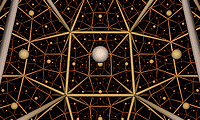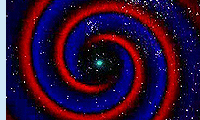




| XVIIIth
Oporto Meeting on Geometry, Topology and Physics |
||
| 9th to 12th July 2009 | ||
| |
Courses
| Introductory courses
| Invited talks | talks
| 1 | 2 | 3 |
|
Main Speakers and Mini courses
The main speakers will each give a minicourse of three one-hour lectures.- Paul
Biran (Tel-Aviv University, Israel)
"Recent developments in
Lagrangian topology"
Abstract: In this series of talks we shall survey recent developments in symplectic topology of Lagrangian submanifolds, in particular in Lagrangian Floer theory. The focus will be on the homological theory coming from the so called "pearl complex", that was recently developed by Biran and Cornea. This theory combines classical Morse theory with the theory of holomorphic disks. It produces an intermediate object which links in a very explicit way Floer homology and classical Morse homology. We shall explain how this theory is constructed and how it leads to a variety of applications in the following directions:
1) Study of the topology of Lagrangian submanifolds.
2) Questions from symplectic topology such as Lagrangian intersections, spectral numbers and symplectic packing.
3) Questions about counting of holomorphic curves with boundaries on Lagrangian submanifolds.
The talks will be essentially self contained and no serious knowledge of symplectic geometry will be assumed.
- Henrique Bursztyn (IMPA, Brasil) "Geometry around Dirac Structures"
Abstract: Dirac structures were introduced by
Courant and Weinstein around 20 years ago, motivated by the study of
mechanical systems with constraints. Examples of Dirac structures
naturally associated with symplectic geometry include closed 2-forms
(e.g. the restriction of a symplectic form to a constraint submanifold)
and Poisson manifolds (e.g. the quotient of a symplectic manifold by a
Lie group acting freely and properly via symplectomorphisms). A key
ingredient in the theory of Dirac structures is the so-called Courant
bracket, which gives a unified way to view many known integrability
conditions in geometry. The first of these lectures will provide an
introduction to Dirac structures, with basic definitions, properties
and examples. The remaining lectures will discuss recent developments
and applications of the theory.
Topics should include, if time permits, Lie theoretic aspects of Dirac geometry (e.g. integration of Dirac structures and equivariant cohomology), connections with generalized momentum map theories (e.g. quasi-hamiltonian and quasi-Poisson spaces), as well as generalized complex structures and supergeometry.
Topics should include, if time permits, Lie theoretic aspects of Dirac geometry (e.g. integration of Dirac structures and equivariant cohomology), connections with generalized momentum map theories (e.g. quasi-hamiltonian and quasi-Poisson spaces), as well as generalized complex structures and supergeometry.
- Yael Karshon (University of Toronto) "Hamiltonian Group Actions"
Abstract: These talks are about symplectic
manifolds with compact group actions that are generated by moment(um)
maps. Such group actions model symmetries in classical mechanics
and often arise in purely mathematical contexts. The moment map encodes
manifold information into polytopes and graphs. The purpose of these
talks is to illustrate how to use a moment map to read information
about
the underlying symplectic manifold. The talks will contain a
sample of tools, examples, and results, old and new.
- Alan Weinstein (U.C. Berkeley) "Poisson brackets, Grupoids and General Relativity"
Abstract: The solutions of Dirac's constraint
equations in the 3+1 formulation of Einstein's equations in general
relativity form a coisotropic subvariety in the cotangent bundle of a space of metrics on a 3-dimensional
manifold. This situation resembles that for the zero set of a momentum map for a
hamiltonian action, but the
formalism does not work when
one tries to use the group
Diff(M) of diffeomorphisms of a space-time M as the symmetry group. What seems to be more relevant for this problem is the groupoid DH(M) of diffeomorphisms
between all pairs of
hypersurfaces in M. Christian Blohmann (Regensburg), Marco
Cezar Fernandes (Brasilia),
and I have found several groupoids and Lie algebroids related to DH(M) which reproduce the Poisson brackets
between Dirac's constraint functions. In these lectures, I will give
introductions to the
variational and hamiltonian formulations of the Einstein equations and to the theory of Lie algebroids and
Lie groupoids, after which I will describe the use of symmetry groupoids and their Lie
algebroids in relativity. (you can see a provisional version here).